Peruse any tourist website or guidebook on Norway and you’ll surely see images of stave churches. The stave churches are Norway’s most important contribution to world architecture. Constructed of wood, these places of worship were once found across Northern Europe. It is only here in Norway, that they have survived. In the Middle Ages, there were more than 1,000 stave churches here. Today, only 28 remain.
Construction
Wood carving skills and traditions are synonymous with Viking culture. Originating with boat construction and home building these techniques evolved into the intricately carved stave churches. The doors and finials display a variety of carvings featuring pre-Christian and Christian motifs, from dragons to crosses. The name ‘stave’ derives from the post and lintel construction of the churches. It consists of a timber framework with load-bearing posts known as ‘stav’ in Norwegian (stafr in Old Norse). These churches represent the most elaborate and technologically advanced types of timber construction that existed in North-Western Europe during the Middle Ages.
Visit
Most of Norway’s 28 remaining stave churches are open to the public. Some are only open during the summer season while others welcome visitors throughout the year. We’ve highlighted a couple of the popular ones below, followed by a list of the remaining churches and their locations and hours for your convenience.
Urnes
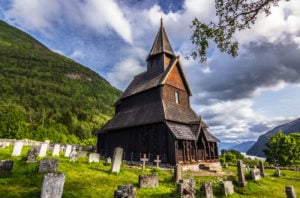
Urnes Stave Church is the oldest and most decorated of Norway’s stave churches. It was constructed in 1130 AD and is located in the village of Ornes. Two churches preceded the current church on this site and distinctive carvings from one of the earlier churches can be seen on the north portal. In 1979 Urnes Stave Church was included on UNESCO’s World Heritage List. The church is open daily May through September.
Heddal
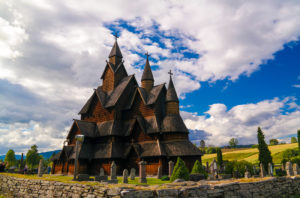
Heddal Stave Church is the largest of the stave churches in Norway. It is located in Notodden, Telemark. This grand wooden church is 25m long and 17m wide and stands an impressive 29m tall with 3 turrets adorned with crosses. It was constructed in 1200 AD and is still a functioning parish church. Heddal is a prime example of the mix of pre-Christian and Christian motifs that are found in many of the stave churches. The church is open June through September and guided tours are available.
Borgund
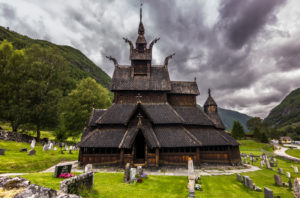
The Borgund Stave Church is probably the most distinctive of the stave churches in Norway. Its roof is adorned with beautifully carved dragon’s heads and crosses and the church has intricately carved portals. It was constructed in 1180 AD. Next to the church is a visitor’s center that houses an exhibition about the stave churches religious impact in the Middle Ages. There is also a café and souvenir shop on the premises. The historic and award winning King’s Road is nearby and makes for some beautiful hiking. The church is open daily April through October.
Eidsborg
A small stave church located in Eidsborg near the West Telemark Museum. It dates back to 1200 AD. Open daily May through June. Guided tours available.
Flesberg
This stave church dates back to 1150 AD. This church is located in Flesberg and is known for its interior. It is in use during the summer months. Contact church office for opening hours.
Garmo
Garmo Stave Church is located in Lillehammer and dates back to 1200 AD. It is open most days year-round.
Gol
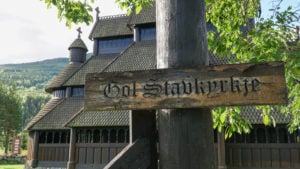
This old church dates from about 12oo AD. It is one of the main attractions at the Norwegian Museum of Cultural History in Oslo. For information on museum hours and pricing please visit the museum website.
Grip
Located on the island of the same name, the Grip Stave Church was constructed in 1470 AD. Open daily during the summer months.
Haltdalen
Haltdalen is a small church constructed in 1171 AD. You can visit the church at the Sverresborg Trøndelag Folk Museum in Trondheim. For information on museum hours and pricing please visit the museum website.
Hedalen
Hedalen Stave Church dates back to 1160 AD. The church has a beautiful medieval gate consisting of dragons and animal heads. The church is open daily June through August.
Hegge
This stave church is the main church in Øystre-Slidre and was constructed in 1200 AD. Open daily during the summer months.
Hopperstad
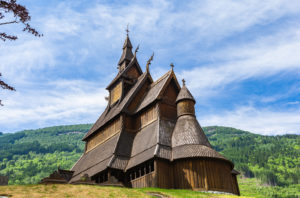
The beautiful Hopperstad Stave Church in Vik in Sogn dates from 1130 AD. After a period of decline, it experienced a wonderful restoration in the 1880s at the hands of architect Peter Blix. Open daily May through September.
Høre
In the 19th century this stave church was rebuilt, but the original skeleton from 1179 AD is inside. It is open Monday through Saturday during the summer months.
Høyjord
The oldest part of the church is from 1150 AD with newer construction of the nave in the 13th century and there are drawings of ships on the north wall from the 14th. Vestfold’s only stave church is open most days during the summer months.
Kaupanger
The size and unique architecture are what set this stave church apart from others. It is the largest in Vestland county and was constructed in 1140 AD. It is open daily during the summer months.
Kvernes
Kvernes Stave Church is the only stave church in Norway built after the middle ages. Located about 25 minutes from the popular Atlantic Ocean Road, it is open daily during the summer months.
Lom
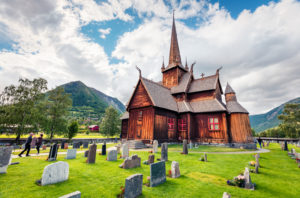
The stave church at Lom was constructed in 1160 AD. It is one of a small number of stave churches in which the original medieval crest with a dragon head still survives. Open daily during the summer months.
Lomen
Lomen Stave Church is in the village of the same name and is believed to date back to 1192 AD. It is open Mondays, Tuesdays, Saturdays, and Sundays in the summer months.
Nore
The stave church at Nore was built around 1167 AD. An archeological dig at the site found graves below the church indicating that there was likely an even earlier church at this site. Nore Stave Church is open daily during the summer months.
Øye
The church at Øye was originally constructed in 1180 AD, but was torn down in 1747 to make a new church. In 1935 156 parts from the stave church were found underneath the newer church and reconstruction began in the 50s. Contact the local church office for opening hours.
Reinli
Reinli Stave Church has the distinctive look of roof over roof with crosses adorning the top. It was constructed in 1300 AD and is open daily (except Wednesdays) during the summer months.
Ringebu
The stave church at Ringebu is open daily during the summer months. It was constructed in 1220 AD.
Rollag
Located in the village of Rollag, the Rollag Stave Church was constructed in 1250 AD. Unfortunately not much of the original church remains. It is open daily May through August.
Rødven
The Rødven Stave Church is located in the village of Rødven and dates back to 1300 AD. A crucifix from that period is among its oldest remains. Open daily during the summer months.
Røldal
Røldal Stave Church was built in 1250 AD. There is a crucifix above the door dating back to the time of construction that was believed to have healing powers. The church is open daily during the summer months.
Torpo
Torpo Stave Church is one of the oldest stave churches and is believed to have been built around 1150 AD. It is the only one in the valley of Hallingdal that is preserved on its original site. The church is open daily during the summer months.
Undredal
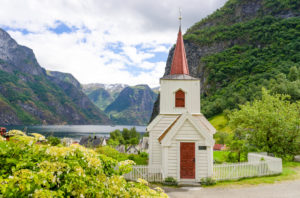
The little stave church at Undredal is said to be the smallest church in Scandinavia still in use. It was constructed in 1147 AD. Contact the local church office for hours.
Uvdal
While the Uvdal Stave Church was constructed in 1168 AD, its current appearance is the result of many extensions and alterations up to the 19th century. Open daily through the summer months.
